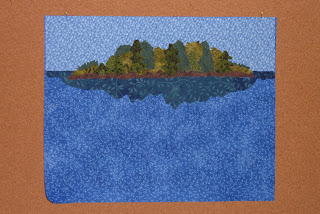I hope everyone had a good time on New Year's Eve. Year 2013 is going to be avery exciting year for our family. My first Granddaughter is due in May.
Going from the top of the learning curve in constructing garments to sliding to the bottom of the learning curve in making quilts is a very humbling experience. When I first started this journey about five years ago I browsed the Internet for websites, visited quilt shows, read books and blogs. I even traced a pattern I wanted to try and bought the material, but it just sat.
It wasn't until about two years when I really decided to take the plunge and leave my safe secure world of making clothes. I signed up to take a beginner's quilting class offered by the county's recreation department by a well known quilting teacher in the area. I took the class to get hands on instruction for basic quilt construction. Following the class' I spent the year piecing sampler quilts to practice my new
craft .
Finally in the Spring of 2012, I decided it was time to attempt my first wallhanging,
Jack. Being new at quilting, consciously and unconsciously, I tended to play it safe. I kept the composition very simple and used the stippling stitch throughout. For some reason, I had the notion that I had to stitch through every little piece and inch of fabric. The overall design of the negative space was not taken into consideration, just getting it stitched was the focus. The "success" of my first project put me in a new comfort zone that carried me through many projects. Dogs became my focus for several quilts because they were an easy subject;
Molly and Maggie,
Toby, and Lucy. With these quilts, I concentrated on the subject and paid little attention to the background or negative space. Also, I continued to use the stippling stitch throughout the quilt.
Olive was the first quilt I began to take risks. More attention was paid to the overall composition, but not enough to make ithe negative space interesting. I made the attempt to give some attention to the overall composition by making look as if Olive was in a bed of flowers and by attending to details on the flowers. Also, I continued to use stippling stitch on my main subject, Olive. But in the negative space, I stitched flowers, a break away from the usual stippling stitch.
My son's
home provided me with the opportunity to deal with the overall composition and not just a single subject. This picture contained many details, thus I decided to use paint and material. I felt as though this quilt provided me with the appropriate slate to really go outside that comfort zone I had found with the dogs. This quilt was going to be very different from the dogs. It was time to take some risks: the leaves on the tree, painting the trunk, giving the picture some feeling of dimension, painting the bricks on the house, shading on the garden stones, and the flowers. Similar to Olive, I took the picture into the border with the steps. Also, I used different free motion stitches within the quilt. I only reverted back to the stippling stitch on the tree.
With my Daughter's
home, I continued to concentrate on the overall composition. This time I tried to use the free-motion stitching to add definition to different areas of the house, plants and sky. In addition, I wanted to try and make the stitching a part of the overall design and not just a means of holding the quilt together.
My wallhanging of the
Coneflowers is a definite break away from the pack. I broke all my comfort zones from the beginning to the end.
I still feel that I am at the bottom of the learning curve in making art quilts, but I think I am beginning to climb just a little bit up the curve. Knowing my ability to draw freehand is limited, I will continue to trace my patterns from photographs I have taken or my friends have taken. But, I will take more artistic liberties with the photos when making my art quilts. I know I have a long way to go, but I feel as if for now I am headed in the right direction on the learning curve....up!





















